Companion Planting Herbs in Pots
rabbithutch
10 years ago
Featured Answer
Comments (18)
fatamorgana2121
10 years agoAindra
10 years agoRelated Professionals
Edmond Landscape Contractors · Eureka Landscape Contractors · Fort Atkinson Landscape Contractors · Gaithersburg Landscape Contractors · Galveston Landscape Contractors · Kahului Landscape Contractors · La Mirada Landscape Contractors · Leicester Landscape Contractors · Raleigh Landscape Contractors · Red Oak Landscape Contractors · Forest Hill Landscape Contractors · Palos Heights Landscape Contractors · Cincinnati Roofing & Gutters · SeaTac Roofing & Gutters · Vista Park Roofing & Guttersrabbithutch
10 years agozzackey
10 years agorabbithutch
10 years agoAindra
10 years agoballoonflower
10 years agowally_1936
10 years agoseysonn
10 years agofatamorgana2121
10 years agoopal52
10 years agorabbithutch
10 years agozzackey
10 years agoseysonn
10 years agoeibren
10 years agohoney_n_nc
10 years agogardenper
10 years ago
Related Stories

EDIBLE GARDENSGarden BFFs? Why Your Vegetables Are Begging for Companion Plants
Foster friendships among plants for protection from pests, pollination support and color camaraderie
Full Story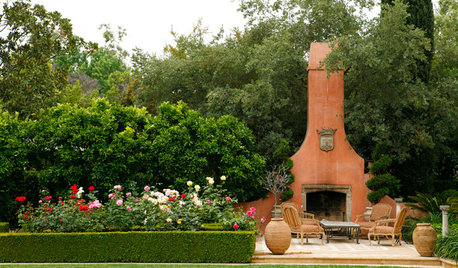
LANDSCAPE DESIGNMake Your Roses Even More Beautiful With These Companion Plants
Nourish your rosebushes and create a visual feast with these 7 classic and unexpected plant pairings
Full Story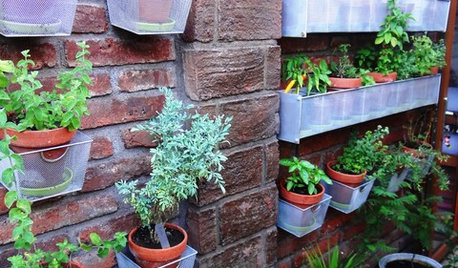
GARDENING GUIDES9 Fresh Herbs for Crowd-Pleasing Thanksgiving Dishes
Pluck these herbs from a windowsill pot or a garden for a Thanksgiving meal that sings with fresh flavor
Full Story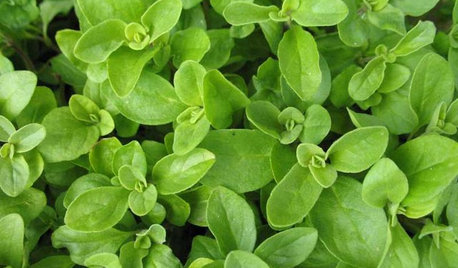
EDIBLE GARDENSHerb Garden Essentials: Grow Your Own Oregano and Marjoram
Say 'buon giorno' to classic Italian herbs you can grow just as easily in pots as in the summer garden
Full Story
SUMMER GARDENINGHow to Grow Basil
Bright color, quick growth and endless uses for cooking make this summer annual a winner in the garden or a pot
Full Story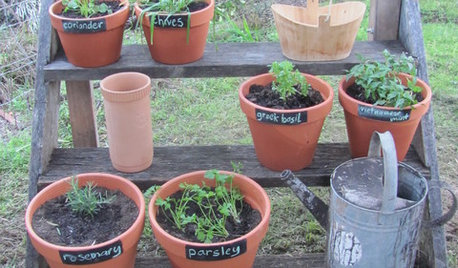
Étagère Herb Gardens Keep Flavor Within Reach
Simple stepladder-style herb gardens are easy to maintain indoors or out, for fresh dish additions anytime
Full Story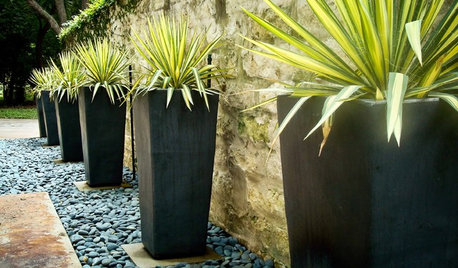
CONTAINER GARDENSWant Compelling Garden Minimalism? Think One Plant, One Pot
Highlight a show-worthy stunner or elevate a pedestrian plant by giving it a solo starring role in the garden
Full Story
CONTAINER GARDENSSolve Your Garden Border Dilemmas With Planted Pots
Set your containers free from the patio — placed among plantings in the ground, they fill unsightly gaps, let you experiment and more
Full Story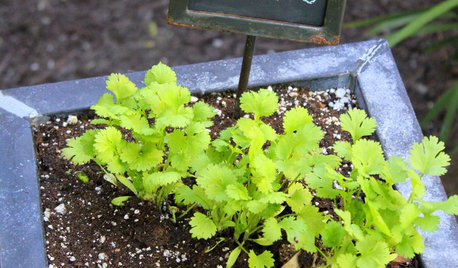
GARDENING GUIDESHerb Garden Essentials: Versatile Cilantro Adds Flavor to Herb Gardens
Love it or hate it, this cool-season herb contributes its unique flavor to any number or the world’s cuisines
Full Story
EDIBLE GARDENS12 Essential Herbs for Your Edible Garden
Make home cooking and drinks even better with herbs plucked from your own backyard or windowsill pot
Full StoryMore Discussions










gynn77